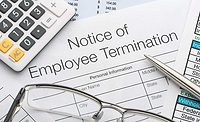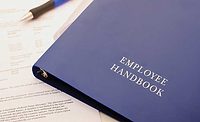NLRB Weighs in on Employee-Handbook Guidelines




When Wendy’s International LLC created its employee handbook, the company probably never imagined it would become the poster child for what not to do. Yet the Office of the General Counsel (OGC) of the National Labor Relations Board (NLRB), in its recently released Report of the General Counsel Concerning Employment Rules, has held up Wendy’s efforts as an example of illegal, overbroad rules and regulations in violation of federal labor laws.
Among Wendy’s errors, according to the NLRB: an unlawful handbook disclosure provision; an overly broad social media policy; illegal provisions regarding conflicts of interest; overly broad rules regarding copyright use; too-restrictive rules on employee conduct; and an unacceptable ban on cellphone use at work. Under an informal, bilateral settlement with the NLRB, Wendy’s modified its handbook.hen Wendy’s International LLC created its employee handbook, the company probably never imagined it would become the poster child for what not to do. Yet the Office of the General Counsel (OGC) of the National Labor Relations Board (NLRB), in its recently released Report of the General Counsel Concerning Employment Rules, has held up Wendy’s efforts as an example of illegal, overbroad rules and regulations in violation of federal labor laws.
Along with specific examples from Wendy’s, the NLRB publication describes a number of handbook rules that could get companies into legal trouble. At 30 pages, the report may seem overwhelming, but it provides a roadmap for employers on what the NLRB considers lawful and unlawful. If companies haven’t reviewed the information yet, they should immediately reach out to their HR department or attorneys and conduct a handbook review.
The Updated Guidance
The NLRB memorandum was issued to clear up confusion on changing issues, new social media policies.
The report consists of two parts. The first looks at general employee handbook rules the NLRB has found illegal. It then compares the illegal rules to ones that the NLRB considers lawful, and explains the differences. The second part delves into greater detail about the problems with the handbook from Wendy’s.
According to the report, many of the handbook rules in both sections violated Sections 7 and 8 of the National Labor Relations Act (NLRA). Under Section 7, employees are guaranteed “the right to self-organization, to form, join or assist labor organizations, to bargain collectively through representatives of their own choosing, and to engage in other concerted activities for the purpose of collective bargaining or other mutual aid or protection,” as well as the right “to refrain from any or all such activities.” Section 8(a)(1) of the NLRA makes it an unfair labor practice for an employer “to interfere with, restrain or coerce employees in the exercise of the rights guaranteed in Section 7.”
The report describes the NLRB’s 2004 decision in the Lutheran Heritage Village-Livonia case, which found that “the mere maintenance of a work rule may violate Section 8(a)(1) of the Act if the rule has a chilling effect on employees’ Section 7 activity.” That case determined rules can violate the act if:
- Employees would reasonably interpret the rule’s language to prohibit Section 7 activity;
- The rule was created in response to union or other Section 7 activity; or
- The rule was actually applied to restrict employees from exercising Section 7 rights.
According to the report, many issues with employee-handbook rules come under the first aspect, where employees could reasonably believe that a rule prohibits protected activity.
The NLRB’s views on the following types of policies limit what would normally be considered non-controversial and normal employment policies. It’s important to remember that the NLRB’s views of these policies have not been tested in litigation. That being said, the report explored several employment rules that the NLRB believes to frequently violate the NLRA, including:
Confidentiality.Under the NLRA, employees have the right to discuss topics such as wages, hours, and other terms and conditions of employment with their fellow employees and non-employees, such as union representatives. That means employers can get in trouble for instituting confidentially policies that specifically prohibit workers from talking about terms and conditions of employment or, in the NLRB’s view, for having policies that would make workers reasonably conclude that they are prohibited from talking about the topics.
Conduct toward the company and supervisors.Criticizing or protesting labor policies or employee treatment is also protected under the NLRA. Consequently, rules that either prohibit, or could be interpreted to prohibit, criticism over protected activities are illegal.
Conduct toward coworkers.Employees also have the right to publicly discuss and criticize their employer’s labor policies with each other. That’s true even if those conversations become contentious. So without clarification, employers can find themselves in trouble for banning “negative” or “inappropriate” conversations between workers.
Employee interaction with third parties.The NLRA also gives employees the right to talk with the media, government agencies and other third parties about wages, benefits, and other terms and conditions of employment. Employers can still limit who can make official company statements, but rules that could restrict these types of communications can get employers into trouble.
Restricting use of company logos, copyrights and trademarks.The NLRB recognizes that companies have an interest in protecting their intellectual property. But companies can’t restrict employees’ fair use of logos, copyrights or trademarks, including on picket signs, leaflets and other protest material.
Photography and recording.When engaging in protected activity, employees also have the right to take photographs and make recordings. That means employers can get in trouble for completely prohibiting workers from taking pictures and making audio and video recordings at work, as well as having cameras and recorders at work.
Employees leaving work.The NLRB is extremely protective of workers’ rights to strike, so employers must be careful about creating rules that restrict employees’ rights to leave work, if those rules could be interpreted as banning protected strike actions and walkouts.
Conflict-of-interest rules.Employees have a right to participate in concerted activity to improve their terms and conditions of employment, even when those actions conflict with their employer’s interests. As an example, the report points to employees’ rights to organize a boycott or protest in front of a company. So rules that could prohibit such activities are unlawful.
What to Do Next
While employers may disagree with many of the NLRB’s positions and findings, the report offers much-needed clarity on how the NLRB views employee-handbook rules. In order to comply with this new information, companies need to take several steps.
Talk to the experts.Employers should immediately consult with their in-house attorneys, outside law firms, and HR departments to review and understand how the NLRB’s approach to handbooks could affect them. The sooner companies take action, the more they minimize their chances of being found in non-compliance.
Make sure rules are clear and specific.Working with the experts, companies should review their current rules and determine what changes they need to make. In many of the examples the NLRB included, problems came about because of broad or vague rules that didn’t clarify differences between protected and non-protected activity. Employers can head off many headaches by making such distinctions.
Educate employees about any updates.If employers make any changes to their handbooks, they need to let employees and supervisors know of the changes. Some type of written acknowledgment should be obtained. Companies should also provide regular training so employees understand the differences between protected and unprotected activity.
Employee handbooks are designed to educate workers and help companies run smoothly — not cause problems with the NLRB. By taking a few steps, employers can make sure their employee handbooks answer questions and clarify expectations, rather than create issues.
Looking for a reprint of this article?
From high-res PDFs to custom plaques, order your copy today!








